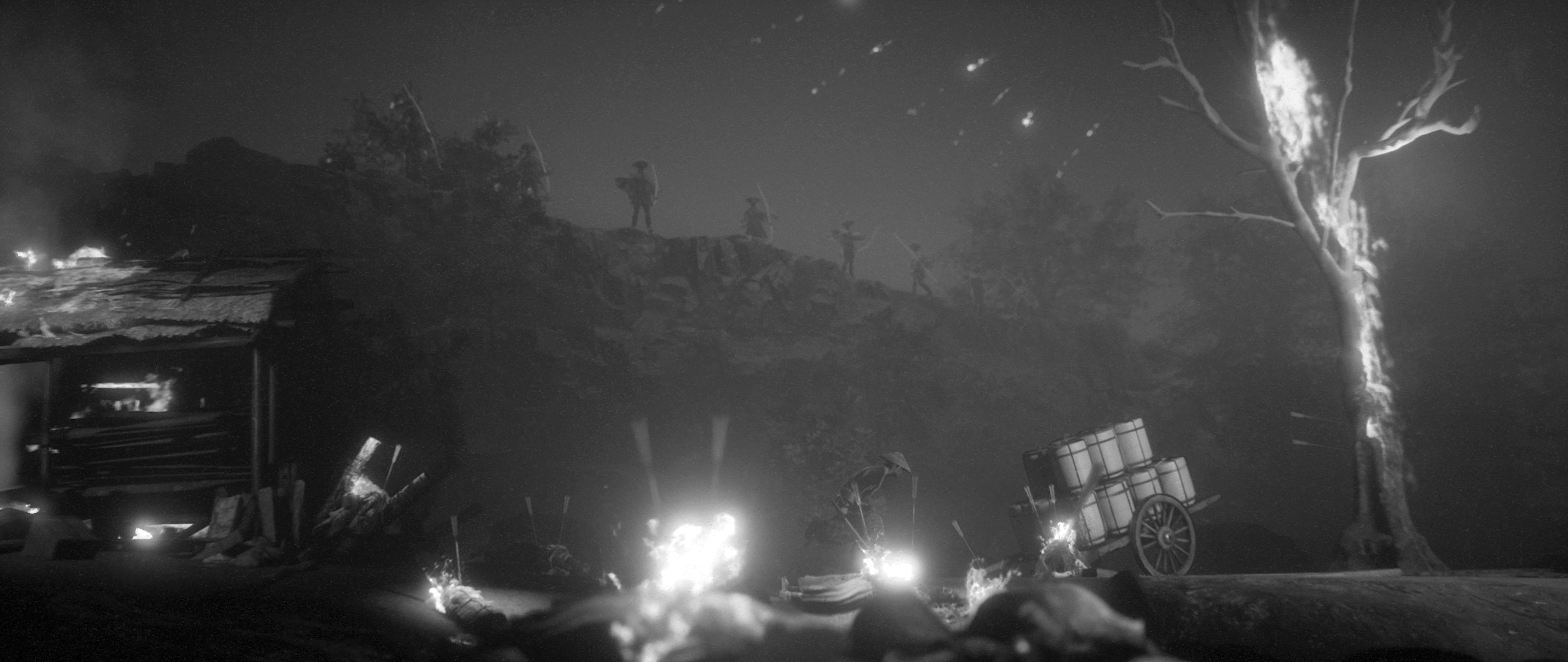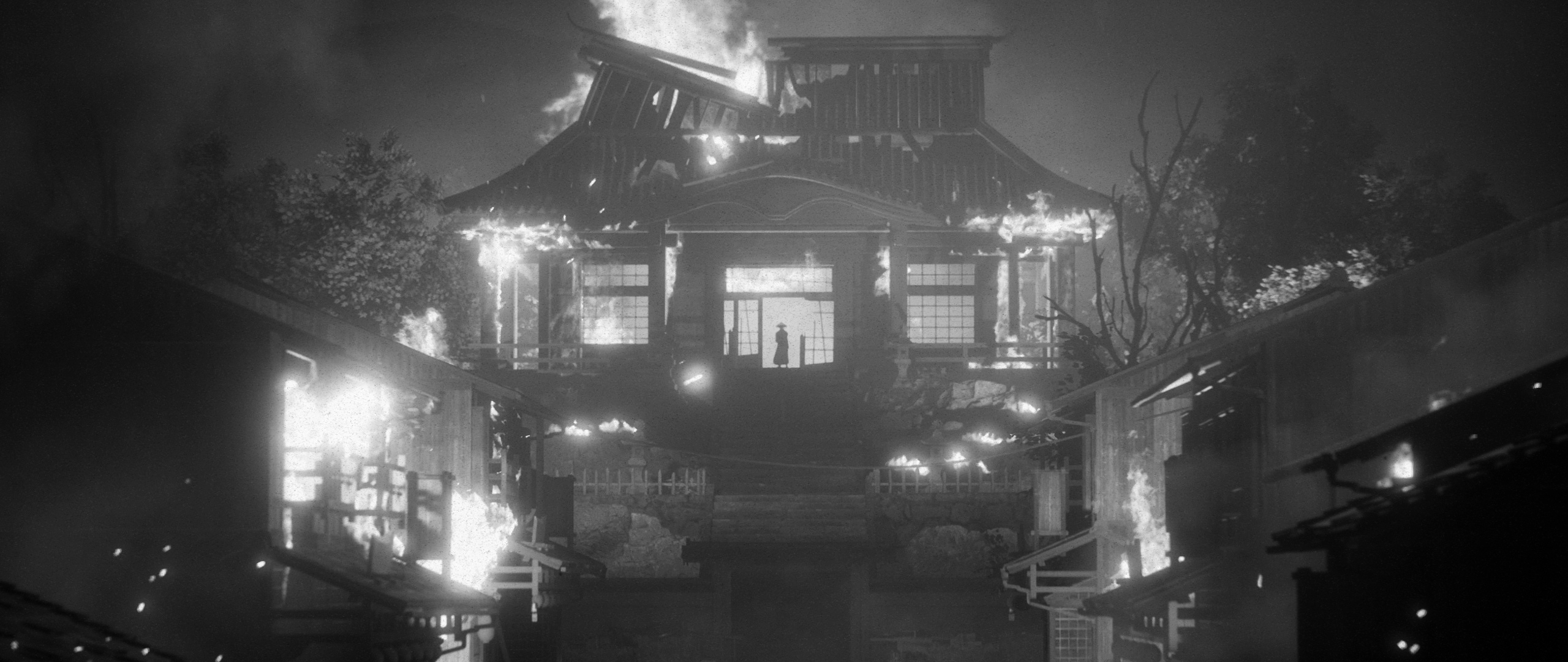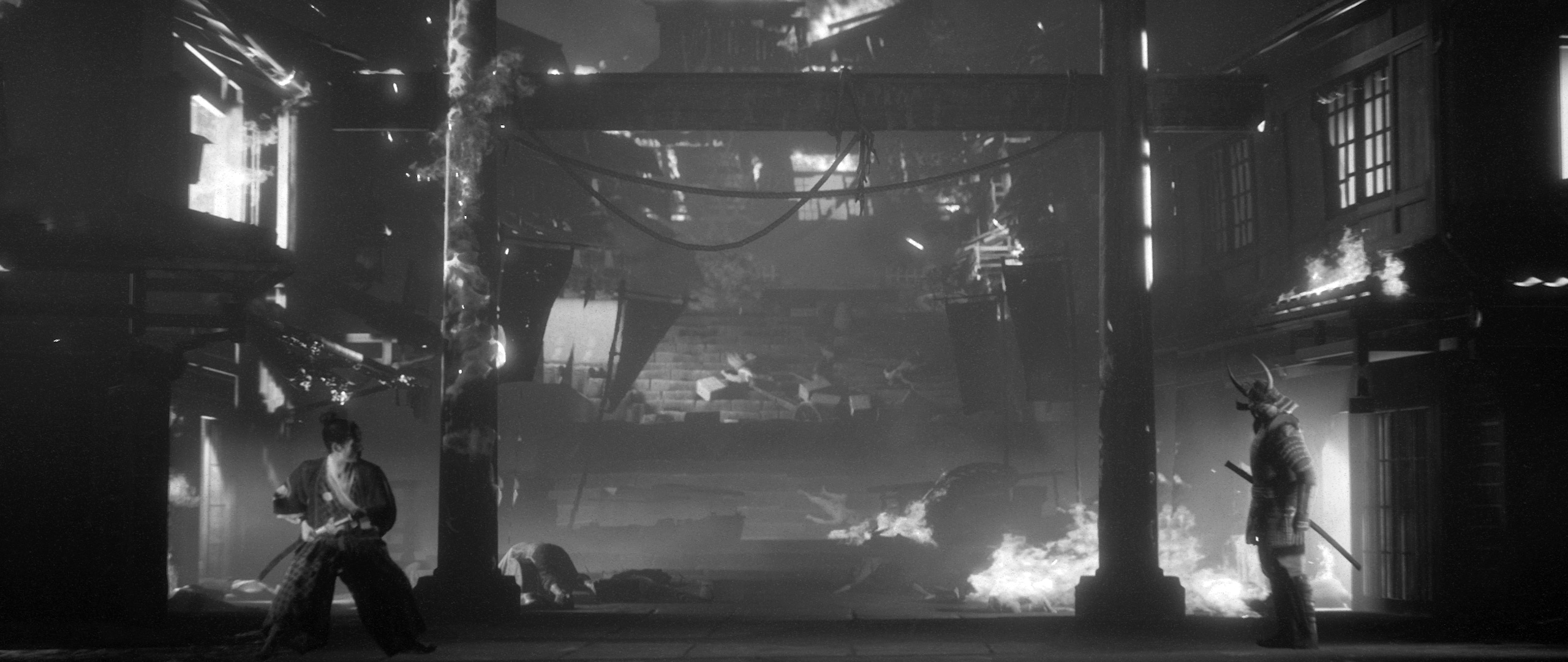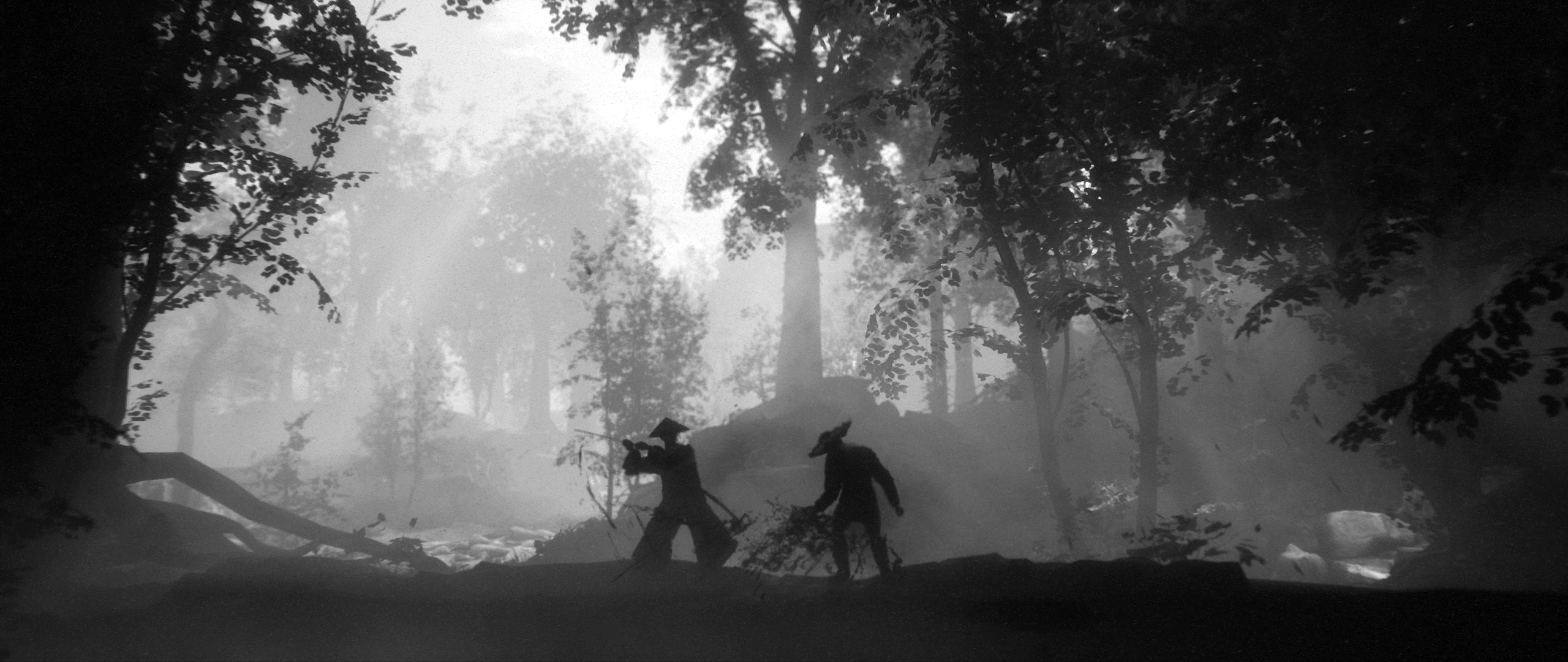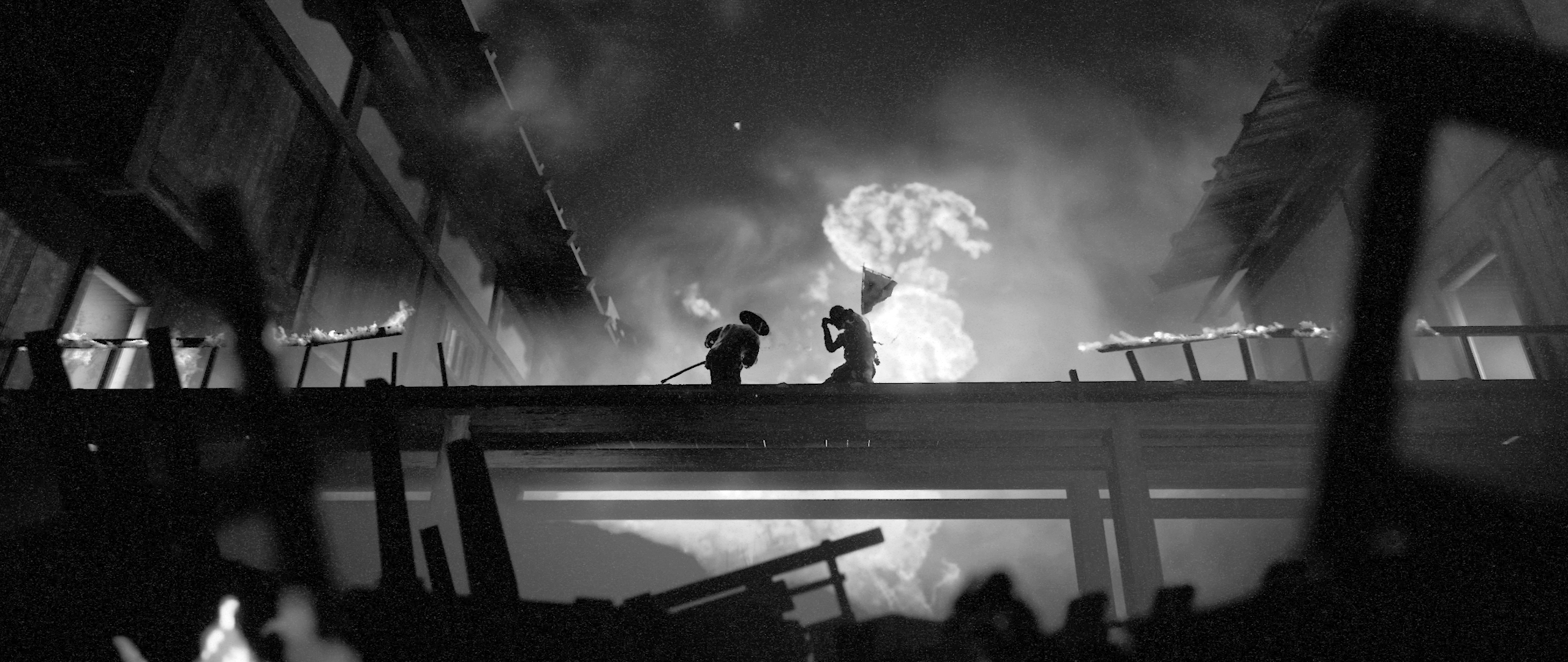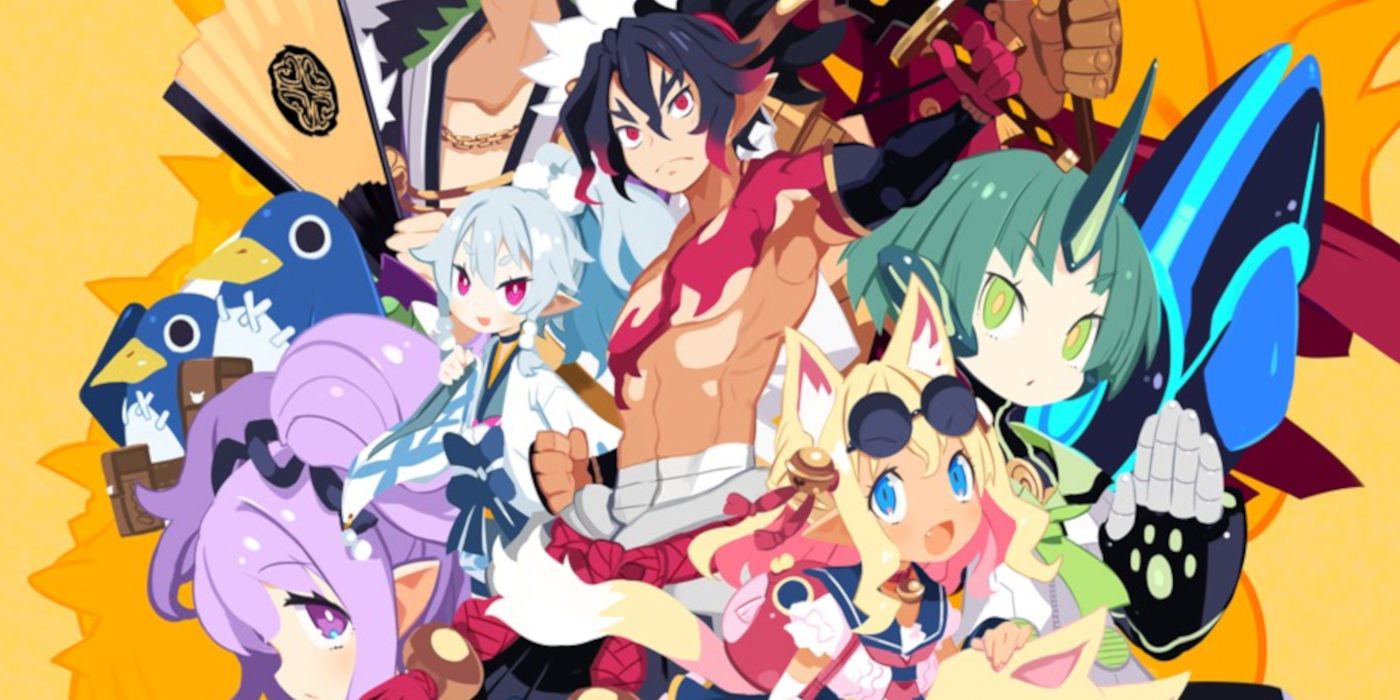Trek to Yomi
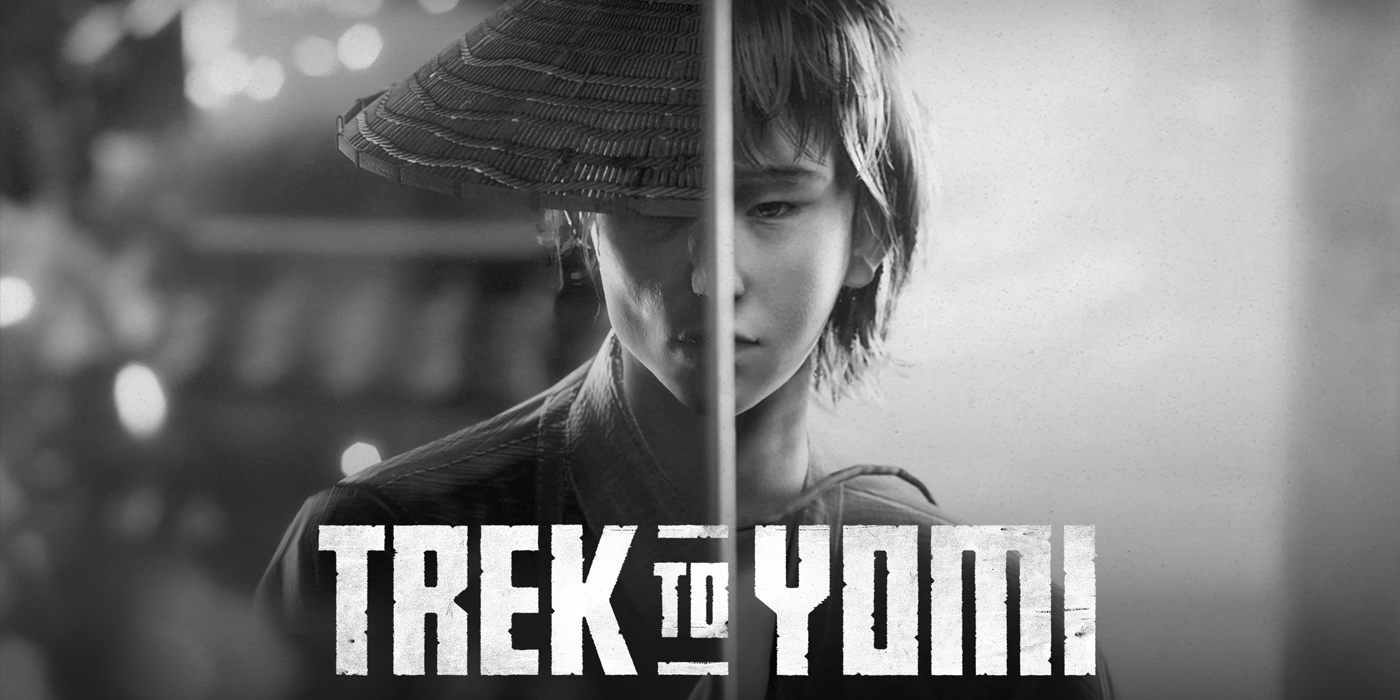
Whether or not he likes it, Tom Cruise has a lot to answer for. Not content with providing some of the most memorable moments in modern cinema, 2003’s Last Samurai introduced a young Joe to the world of historical Japanese cinema. While not entirely historically accurate and perhaps a little bit insensitive, the western take on Asian culture sparked my interest in 1950s samurai films. For me, there is nothing better than watching a film where every detail has meaning; the way a soldier hangs his sword, or the specific words used to convey emotion, having been carefully orchestrated to set an emotional tone and make the audience understand the trials and tribulations of a typically tormented character. And if that wasn’t enough for you, filmmakers throw in a couple of very violent battles and call it a day. So when Devolver Digital announced a video game based on the love of the same genre of movie, I simply had to give it a go.
At A Glance
| Scores | |
| Visuals | 8.5 /10 |
| Sound | 9 /10 |
| Gameplay | 8 /10 |
| Overall | 8 /10 |
| Positives | + Intense, well-balanced action + Stunning scenery + Incredible soundtrack |
| Negatives | – A little on the short side – Difficulty quickly ramps up – Character models are average |
| Price (When Reviewed) | £16.74 |
| Our Playtime | 6 hours |
| Version Tested | |
| Available On | PS5, PS4, Xbox Series X|S, Xbox One, Nintendo Switch, PC |
Developed by Leonard Menchiari and Flying Wild Hog, Trek to Yomi is best described as a 2D cinematic hack and slash game, set during the Edo period of Feudal Japan. When Hiroki’s village is razed to the ground, the young samurai sets out on that most classical quest – revenge. Hiroki must travel to Yomi, the Japanese underworld, in order to confront his aggressors and seek peace.
Like any good film, if you dig too far into the plot you’ll see it’s not the most layered experience and the same holds true for Yomi. The tale of revenge is as complicated as it gets, and at five or so hours, it felt more like a snappy video game that left me wanting more rather than an over-bloated and complicated film. Although there are a handful of sidequests to encounter and a plethora of collectibles to find throughout your time, these are easily found and once the credits have rolled that’s it.
As alluded to in the introduction, Trek to Yomi is a love letter to the old samurai films of the last century, which can be seen not only in the classic storytelling but throughout the game’s presentation. Saying the game has black-and-white visuals is an oversimplification of what is going on here. Yes, the game has no colour and has a grainy filter often seen in old 35mm films, but that’s not to say it’s monotone by any stretch of the imagination.
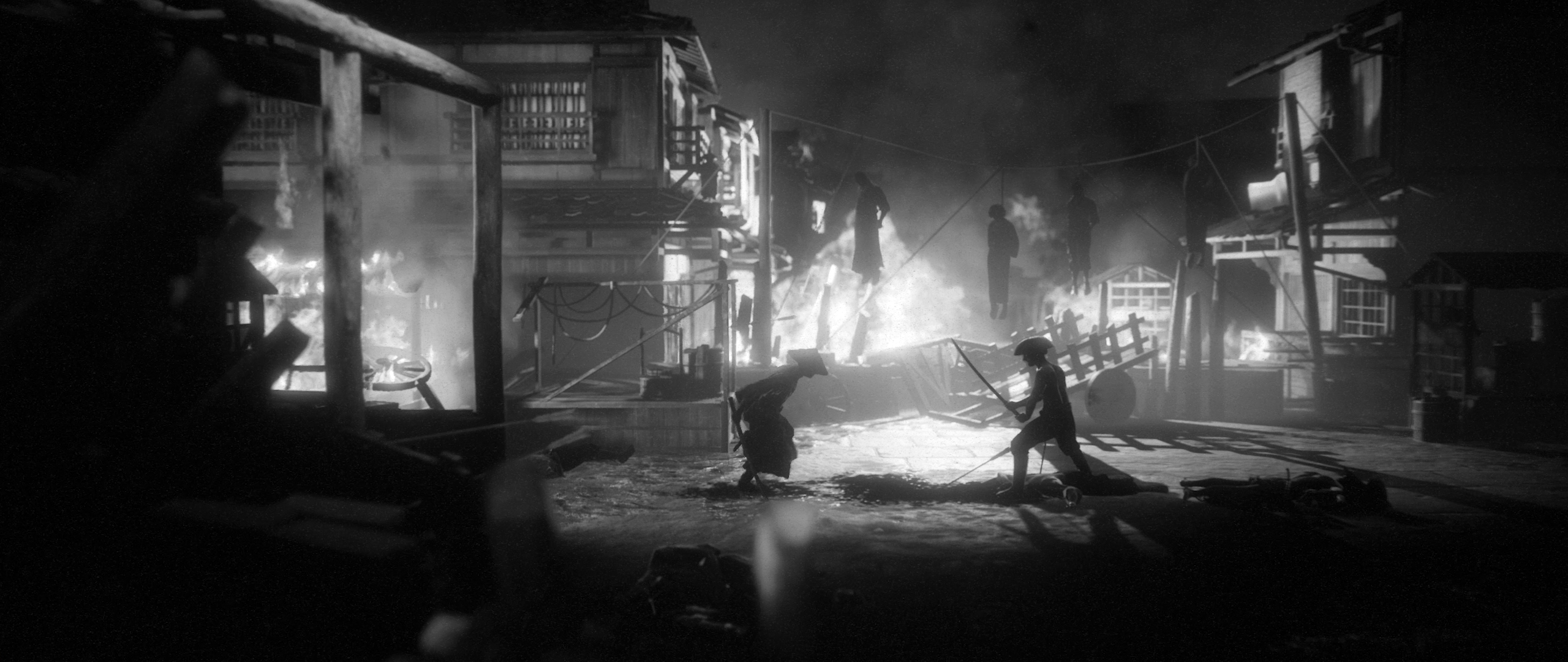
The 2D presentation lends itself to Yomi as it allows a static camera to frame each scene. The use of light sources is equally cinematic, and much like a director lighting a set, every single frame of the game extrudes different shades of grey. Depending on how the scene plays out will depend on how the light interacts with the objects, either casting large shadows or drawing my eyes to the bright source which led to some interesting mind tricks. I knew the game was black, white and every shade between, but despite the lack of colouration I still felt that the fires on screen were burning hot orange, and I felt that water running under bridges was as crystal clear as can be – it was as if the colours of the objects were seeping into my mind as it tried to colour the game itself.
The scenery is equally impressive, the ragged towns seen in the first few hours are in a state of decay and destruction that feels out of a high-budget movie set. The rolling vistas and the jungle areas in which Hiroki finds himself are almost photographic in appearance and exactly how I would expect Edo-era Japan to look. The only blemish on the otherwise perfect visuals is the character models themselves, which appear rather simplistic compared to the rest of the aesthetic.

With incredibly detailed environments, having plain characters does spoil the presentation a little bit. Don’t get me wrong, the wide camera angles keep you far enough away from the action that it is hardly noticeable, but up close, the warriors are definitely on the bland side. The most annoying aspect of Trek to Yomi is the game’s soundtrack, more specifically the NPCs. Throughout the opening scenes, villages are being pillaged which leads to a lot of townsfolk understandably crying out in pain, but the repetitive and consistent wailing noise cuts through the otherwise brilliant soundtrack that encapsulates the Edo period. It’s a small annoyance but after a few repeat retries, it didn’t half get on my nerves.
Up to now, I’ve talked about how Yomi would make a great, albeit long film, so let’s talk about what makes Trek to Yomi a decent video game – combat. As a budding samurai, each fight revolves around swordplay with a katana being your main source of power. Flying Wild Hog has mercifully chosen to keep things relatively simple, one button swings your sword for a light attack, another acts as a heavy strike and one more acts as a parry. The trick to success, however, is that you need exquisite timing in order to make serious progress; each enemy regardless of if it is a boss or your bog-standard grunt, will need precise actions, otherwise, you will end up as a yakitori.
This caused me issues to begin with, as I struggled to get to grips with Hiroki’s speed, but once everything clicked into place, each battle became a glorious, bloody ballet, usually resulting in a decapitation. Battles are tough but the multitude of save points and health collectibles – especially in the early stages – means that even though there will be multiple retries, you’re never thrown too far back and you can quickly regroup for the next assault.

Trek to Yomi is one heck of a game that sets out to pay homage to the great samurai films of the 1950s and it certainly achieves this and then some. With a bold art direction that perfectly resonates with mid-twentieth-century film-making, it is one of the most well put together games in the indie scene. Its breathtaking scenery and equally impressive soundtrack create an atmosphere that encapsulates the Edo era, with the only downsides being the most nit-picky of details. The gameplay is a rewarding adventure in itself, with every strike and parry full of meaning. There are very few downsides to consider with Yomi, and when the biggest complaint is the constant screaming in the earlier levels, it certainly says something about the game’s overall design.
